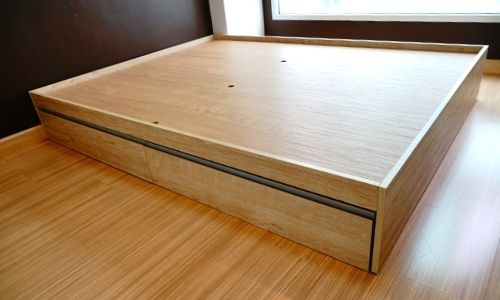Covering a vent with a bed is a common occurrence in many households, but it can have several negative consequences that affect both your health and your home’s heating and cooling systems. In this article, we will discuss why covering a vent with a bed is not recommended, the potential consequences of doing so, and some alternative solutions to improve your home’s heating and cooling efficiency.
Why Covering a Vent with a Bed Is Not Recommended
Vents are an essential component of your home’s heating and cooling system, providing air circulation and maintaining a comfortable temperature in your home. However, when a vent is covered with a bed, it can reduce the airflow, disrupt the balance of your heating and cooling system, and lead to several negative consequences, including:
- Reduced Airflow: When a vent is covered with a bed, it restricts the airflow, causing less air to circulate throughout the room. This can lead to decreased air quality, increased humidity, and a musty odor, making the room feel stuffy and uncomfortable.
- Overheating or Overcooling: When a vent is blocked by a bed, it causes the air to flow in a different direction, disrupting the balance of your heating and cooling system. This can result in some rooms becoming overheated or overcooled, while other rooms remain at an uncomfortable temperature.
- Increased Energy Bills: Covering a vent with a bed can lead to increased energy bills. As your heating and cooling system has to work harder to maintain a comfortable temperature throughout your home. This can be especially problematic in the summer, when air conditioning bills can be particularly high.
- Damage to Your HVAC System: Over time, covering a vent with a bed can damage your HVAC system. Reducing its efficiency and leading to costly repairs or replacement. It can also lead to a build-up of dust and debris in your air ducts, reducing air quality and potentially causing health problems.
The Potential Consequences of Covering a Vent with a Bed
- Reduced Air Quality: Covering a vent with a bed can lead to reduced air quality in your home. As less air is circulating throughout the room. This can lead to a build-up of dust, dirt, and other allergens. Making it difficult for those with allergies or respiratory problems to breathe comfortably.
- Increased Humidity: When a vent is covered with a bed, it can cause humidity levels to increase. Making the room feel damp and uncomfortable. This can also lead to mold and mildew growth, which can cause health problems and damage your home.
- Musty Odor: When a vent is covered with a bed. It can cause a musty odor to develop in the room. This is because less air is circulating, leading to a build-up of moisture and bacteria, which can cause unpleasant smells.
Alternative Solutions to Covering a Vent with a Bed
If you are looking for ways to improve your home’s heating and cooling efficiency without covering a vent with a bed, here are some alternative solutions to consider:
Rearrange Your Furniture: One simple solution is to rearrange your furniture so that it is not blocking the vent. This can help to improve air circulation and maintain a comfortable temperature throughout your home.
Install Vent Deflectors: Vent deflectors are an inexpensive and easy-to-install solution that can help to direct airflow away from your bed and towards the rest of the room. This can help to improve air circulation and maintain a comfortable temperature throughout your home.
Install Zoning Controls: Zoning controls allow you to divide your home into different heating and cooling zones, so you can adjust the temperature in each room individually. This can help to improve energy efficiency and reduce your energy bills.
Install a Ductless Mini-Split System: A ductless mini-split system is more expensive. But the efficient alternative to a traditional HVAC system. It can be installed in individual rooms, allowing you to control the temperature in each room separately. Without the need for ductwork. This can help to improve energy efficiency and reduce your energy bills.
Use a Room Air Conditioner: If you only need to cool one room, using a room air conditioner. Can be an efficient and cost-effective solution. These units are designed to be installed in a window or through a wall and can be easily removed and stored when not in use.
Use a Portable Heater: If you only need to heat one room. Using a portable heater can be an efficient and cost-effective solution. These units are designed to be easily moved from room to room and can be stored away when not in use.
Conclusion
Covering a vent with a bed is not recommended, as it can lead to reduced air quality. Increased humidity, musty odors, and damage to your HVAC system. Instead, consider alternative solutions such as rearranging your furniture. Installing vent deflectors, using zoning controls, and installing a ductless mini-split system. Using a room air conditioner, or using a portable heater to improve your home’s heating and cooling efficiency. By taking these steps, you can maintain a comfortable temperature in your home without sacrificing your health or your HVAC system’s efficiency.

